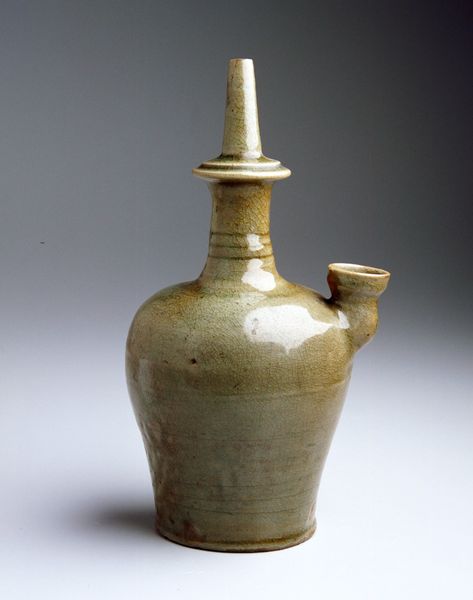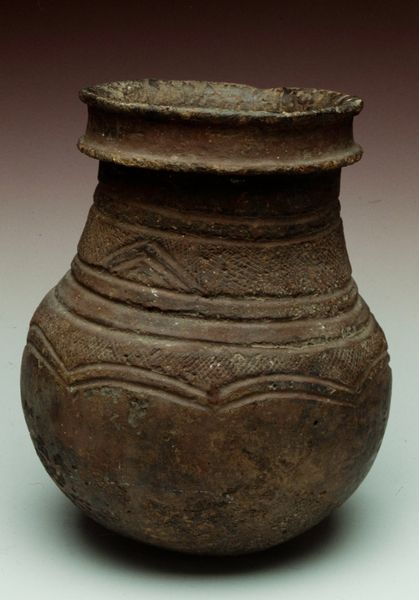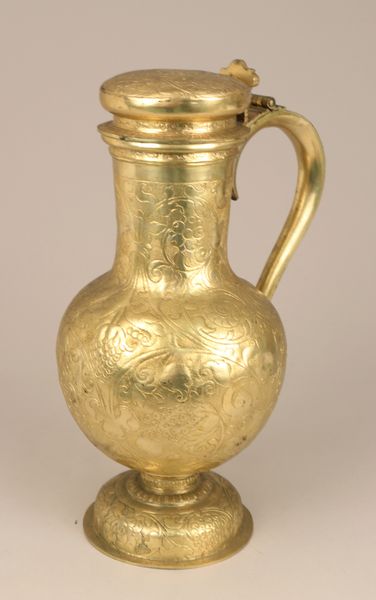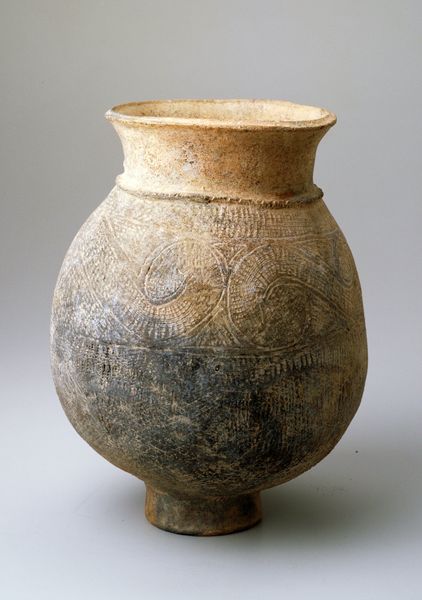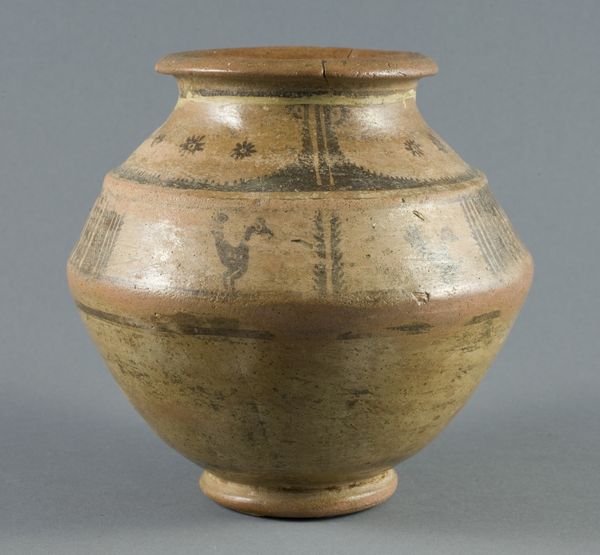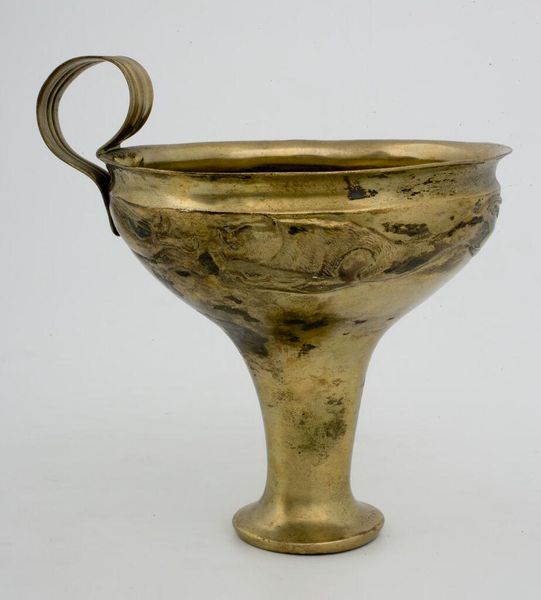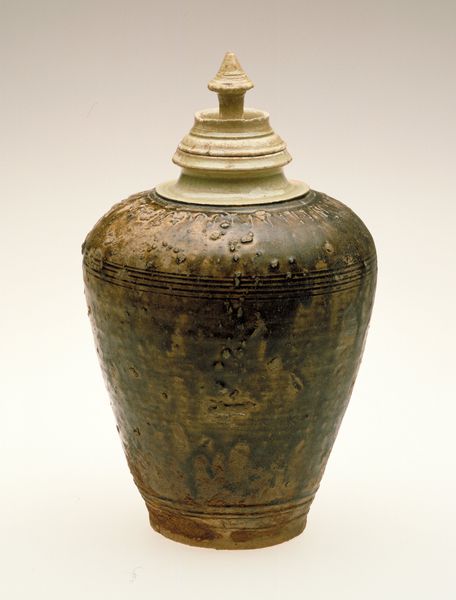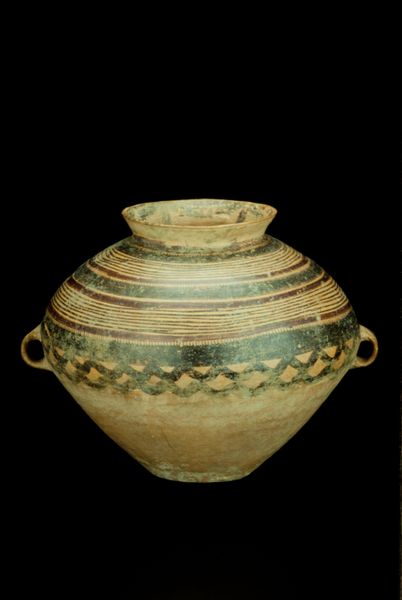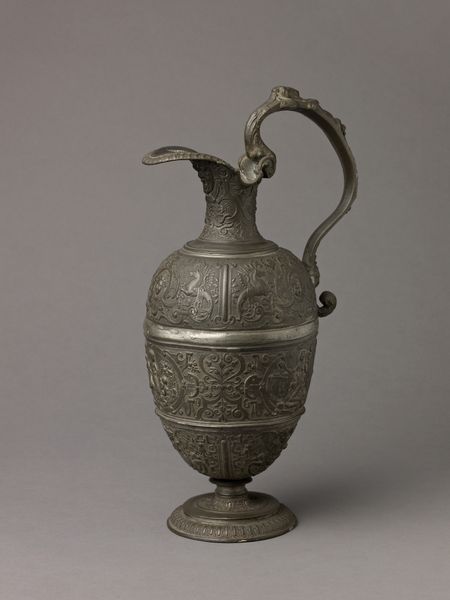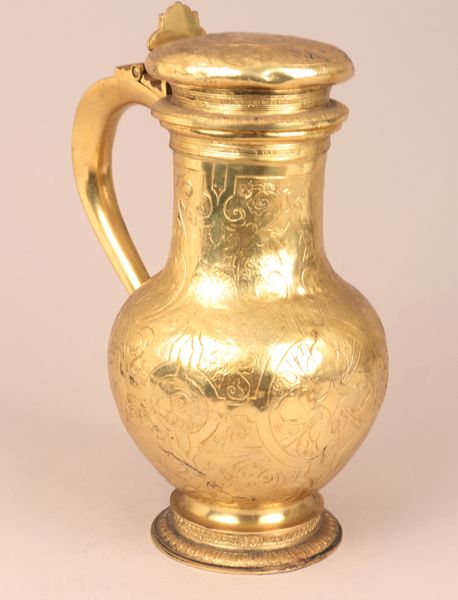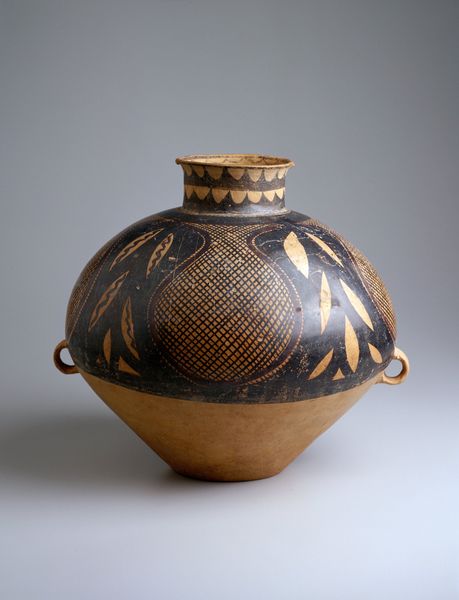
metal, ceramic, sculpture
#
metal
#
ceramic
#
sculptural image
#
england
#
sculpture
#
ceramic
#
islamic-art
#
decorative-art
Dimensions: H. 4 3/4 in. (12.1 cm) W. 6 5/8 in. (16.8 cm) Diam. 4 3/4 in. (12.1 cm)
Copyright: Public Domain
Curator: Before us is a striking metal and ceramic "Vase", created by Elkington & Co. in the 19th century. You can currently find it here at the Metropolitan Museum of Art. Editor: It's beautiful! The ornamentation and craftsmanship evoke a strong feeling of opulence. It gives me a sense of history, as though this vessel played a part in some rich historical drama. Curator: Elkington & Co. were pivotal in the British electroplating industry. Their work reflects a fascinating chapter in industrial design. They used new techniques to create these luxury objects in large quantities, democratizing what once would have been elite commissions. Editor: So mass production intersecting with aesthetics to redefine what society considers 'luxury?' Interesting, because despite the company’s supposed intentions of democratization, luxury, as we understand it, still inherently implies scarcity and excess. How does the history of industrial design contribute to existing social inequalities? Curator: It is true; many argue the benefits weren't evenly distributed, which is an ongoing issue in globalized production. The vase itself, though, features elements derived from Islamic art traditions which points to the popular orientalism prevalent during the period. Editor: Exactly. We're observing a kind of cultural appropriation, where a British company capitalizes on and adapts Islamic artistic elements. There's an immediate conflict—the "borrowing" of these designs is tied to colonial power dynamics. I question the respect, consideration, and understanding of the original cultural context that were put in this creation. Curator: That’s a crucial observation. Elkington & Co. would display works like these at international exhibitions, helping to promote and shape a British vision of global culture and innovation. They created and maintained specific visual narratives through design and manufacture. Editor: I am left to reflect on how material objects can both embody the pinnacle of artistic achievement while at the same time symbolize problematic intersections of culture, labor, and economic structures. We must question: what power imbalances existed that permitted, even incentivized, this appropriation? Curator: It gives us, doesn't it, food for thought in viewing this piece within the broader context of the rise of industrial capitalism and colonialism, both shaping each other.
Comments
No comments
Be the first to comment and join the conversation on the ultimate creative platform.

